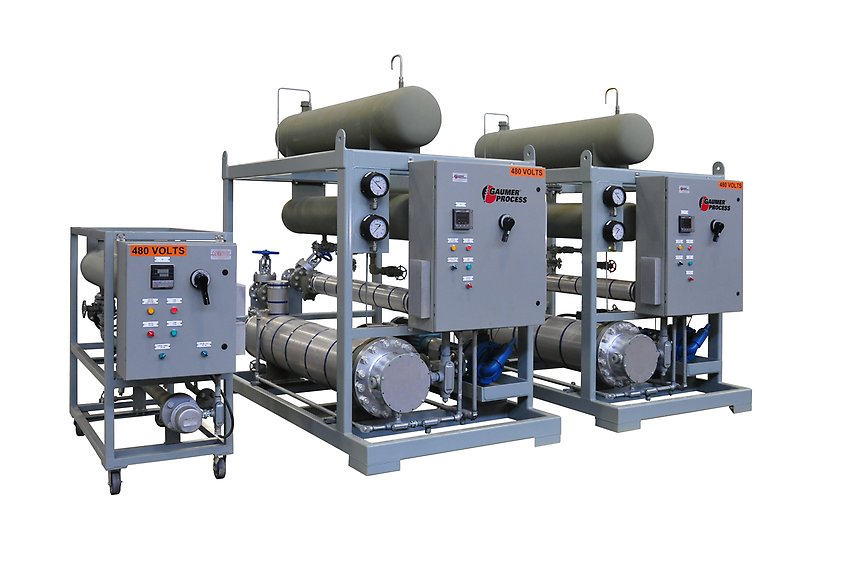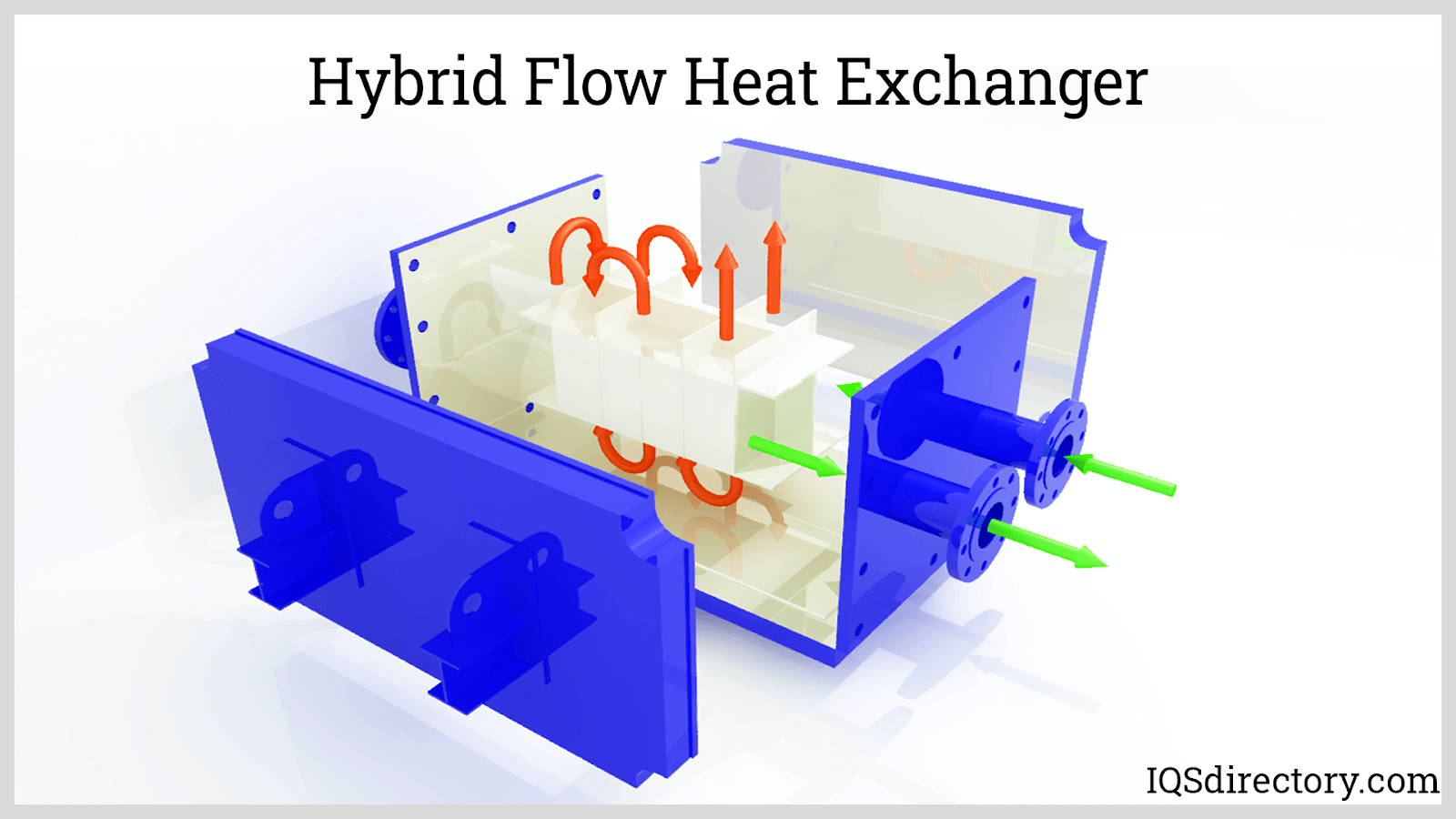Why Choose DVS Heat Transfer Systems for Compact Heat Exchanger Designs
Discovering the Advantages and Applications of Heat Transfer Solutions in Modern Sector
Heat transfer systems play a necessary function in contemporary industry. They include numerous devices such as radiation, convection, and conduction, each adding to reliable thermal administration. Industries like production and aerospace advantage considerably from these systems. As innovations proceed, the integration of innovative products and modern technologies assures to boost energy efficiency. This advancement increases important inquiries about the future effects for sustainability and operational prices across numerous markets. What lies in advance in this ongoing makeover?
Understanding Heat Transfer Concepts
Heat transfer principles are basic to the operation of different industrial systems. These concepts encompass the devices of transmission, radiation, and convection, each playing an essential duty in handling thermal energy. Recognizing conduction includes examining exactly how Heat moves via solid materials, while convection refer to Heat transfer in fluids, driven by fluid activity. Radiation, distinct from the various other 2, involves energy transfer via electromagnetic waves. The effectiveness of Heat transfer influences system performance, energy intake, and general efficiency. Reliable thermal monitoring is vital in procedures such as air conditioning, home heating, and Heat healing. By understanding these concepts, industries can enhance their procedures, lower power prices, and enhance equipment longevity, thus adding to an extra lasting and reliable commercial landscape.
Trick Kinds of Heat Transfer Equipments
While various industries utilize Heat transfer systems for varied applications, numerous vital kinds stand apart as a result of their details features and performances. One of the most usual kinds include radiation, convection, and conduction systems. Transmission systems transfer Heat via straight call between materials, making them effective in solid-state applications. Convection systems, on the various other hand, utilize fluid movement to move Heat, ideal for home heating or cooling gases and liquids. Radiation systems run without a medium, relying upon electro-magnetic waves to move Heat, ideal for high-temperature environments. Each type offers unique functions, enabling industries to customize their Heat transfer services based on functional requirements, energy performance, and cost-effectiveness. Recognizing these systems is essential for enhancing performance in numerous industrial settings.
Industrial Applications of Heat Transfer Technologies
The application of Heat transfer modern technologies in market plays an important duty in enhancing power efficiency and enhancing procedures. DVS Heat Transfer Systems. By carrying out advanced Heat exchange systems, firms can significantly decrease their ecological impact while enhancing overall efficiency. This assimilation not only cultivates sustainability but additionally aligns with modern regulative and consumer demands for greener techniques
Energy Effectiveness Improvements
As industries progressively focus on sustainability, energy effectiveness renovations in Heat transfer modern technologies have actually become crucial for decreasing functional prices and environmental effect. Boosted Heat exchangers, for instance, make use of advanced materials and styles to optimize thermal efficiency while reducing power intake. Furthermore, incorporating variable rate drives in pumping systems allows for better control of fluid flow, bring about substantial energy cost savings. The implementation of clever sensors and automation offers real-time surveillance, making it possible for modifications that maximize power usage. In addition, waste Heat recuperation systems record excess thermal power, transforming it into functional power. These innovations not just improve energy efficiency but also add to an extra lasting commercial landscape by reducing greenhouse gas emissions and supporting compliance with environmental regulations.
Process Optimization Techniques
Refine optimization strategies are important in boosting the effectiveness and efficiency of Heat transfer technologies in industrial applications. These strategies entail refining procedures to take full advantage of Heat transfer performance while minimizing power usage and operational costs. Approaches such as computational liquid dynamics (CFD) modeling permit designers to assess and replicate Heat transfer scenarios, identifying locations for enhancement. Additionally, real-time surveillance systems can supply important data on temperature level slopes and flow prices, making it possible for modifications that optimize efficiency. In addition, carrying out advanced control approaches, such as predictive analytics, can enhance system responsiveness to differing operational needs. By applying these optimization methods, industries can accomplish greater thermal effectiveness, reduced downtime, and enhanced product top quality, inevitably bring about enhanced competition in the marketplace.

Ecological Influence Reduction
While industrial Heat transfer technologies are crucial for operational effectiveness, their application additionally presents chances for substantial ecological influence decrease. By improving power effectiveness, these systems decrease gas intake, leading to lower greenhouse gas emissions. Advanced Heat exchangers can recover waste Heat, redirecting it to preheat inbound liquids, thereby decreasing energy requirements. On top of that, the assimilation of Heat transfer technologies my review here in eco-friendly energy systems, such as solar thermal and geothermal applications, supports the change to sustainable practices. Industries that use these modern technologies also benefit from minimized functional prices and enhanced governing compliance. Overall, the strategic implementation of Heat transfer systems not just bolsters efficiency however also fosters an extra lasting commercial landscape, adding to worldwide environmental goals.
Benefits of Reliable Heat Transfer Solutions
Effective Heat transfer systems provide substantial benefits in modern-day market, mainly through enhanced power effectiveness and expense decrease. By optimizing thermal administration, these systems lessen energy waste, resulting in lower functional expenses (DVS Heat Transfer Systems). Companies can attain higher sustainability and improved productivity.

Power Performance Improvements
As industries increasingly prioritize sustainability and cost-effectiveness, energy efficiency improvements in Heat transfer systems have emerged as an important emphasis. Improved effectiveness in these systems causes minimized energy intake, allowing centers to operate more sustainably. By enhancing Heat transfer techniques, sectors can minimize waste Heat and accomplish much better thermal monitoring, greatly reducing their environmental impact. Advances in technologies such as Heat exchangers and insulation products add to boosted efficiency and dependability. Executing energy-efficient Heat transfer options not only supports conformity with regulative standards yet likewise fosters a society of development within companies. Ultimately, these renovations are vital in lining up commercial procedures with worldwide power conservation objectives, leading the way for a much more sustainable future in manufacturing and handling markets.
Cost Decrease Opportunities
By enhancing Heat transfer systems, markets can disclose considerable cost reduction opportunities that improve their profits. Effective Heat transfer reduces power consumption, leading to reduced energy bills and decreasing operational expenditures. Additionally, improved system efficiency decreases the requirement for maintenance and fixings, in addition saving prices over time. Enhanced Heat transfer can additionally extend devices life-span, allowing business to postpone capital investment on replacements. Furthermore, waste Heat recovery systems can change excess Heat into functional power, better driving down costs. These systems not just streamline processes however likewise add to sustainability efforts, positioning firms favorably in a significantly eco-conscious market. Generally, the financial benefits of efficient Heat transfer systems are crucial and significant for affordable benefit.
Developments in Heat Transfer Solutions
How can contemporary market enhance its procedures through innovative Heat transfer options? By taking on innovative materials and modern technologies, markets can greatly improve thermal efficiency and performance. Innovations such as nanofluids, which improve Heat transfer capacities beyond conventional fluids, and phase modification materials that store and launch thermal energy, are getting traction. Additionally, the combination of smart sensors and IoT devices allows for real-time monitoring and optimization of Heat transfer procedures, lowering waste and boosting system responsiveness. Additive production strategies make it possible for the development of even more complicated Heat exchangers that make best use of surface location while reducing product usage. Collectively, these advancements drive operational performance and produce affordable advantages in numerous markets, including production, energy, and aerospace.
The Role of Heat Transfer in Sustainability Efforts
While the push for sustainability proceeds to reshape markets, the function of Heat transfer modern technologies comes to be progressively important in attaining ecological objectives. Reliable Heat transfer systems help with power efficiency by enhancing thermal monitoring in various processes, substantially decreasing power consumption and greenhouse gas exhausts. Progressed Heat exchangers are made use of in industrial applications to recover waste Heat, therefore minimizing energy waste. Furthermore, innovations such as phase adjustment products boost thermal storage, adding to renewable resource integration. The adoption of sustainable fluids in Heat transfer systems can minimize ecological impact. By focusing on effective Heat transfer, industries not only enhance operational performance however likewise line up with global sustainability efforts, cultivating a cleaner, much more sustainable future.
Regularly Asked Questions
How Do Heat Transfer Solutions Effect Energy Costs in Manufacturing?
Heat transfer systems substantially affect energy expenses in manufacturing by boosting effectiveness, decreasing waste, and optimizing thermal monitoring. These renovations lead to decrease functional costs, eventually benefiting look here total performance and productivity in commercial operations.
What Maintenance Is Needed for Heat Transfer Systems?
Upkeep for Heat transfer systems consists of normal examinations, cleansing of components, checking liquid levels and problems, changing worn components, and ensuring correct insulation. These actions enhance performance, prolong lifespan, and protect against expensive break downs in procedure.
Are There Safety Problems With Heat Transfer Systems?
Safety concerns with Heat transfer view it systems consist of potential leaks, pressure build-up, and thermal threats. Proper design, normal maintenance, and adherence to safety procedures are necessary to mitigate these risks and guarantee secure operation in commercial settings.
How Can I Choose the Right Heat Transfer System for My Business?
Picking the right Heat transfer system includes assessing factors such as effectiveness, application needs, budget restrictions, and safety and security requirements. A detailed evaluation of these aspects will certainly assist ensure perfect performance and dependability in organization procedures.
What Are Common Failings in Heat Transfer Equipments and Their Reasons?

Recognizing transmission involves evaluating how Heat relocates with strong materials, while convection pertains to Heat transfer in fluids, driven by fluid activity. By maximizing Heat transfer methods, industries can decrease waste Heat and accomplish much better thermal monitoring, greatly reducing their environmental impact. Waste Heat recovery systems can transform excess Heat right into usable power, additionally driving down prices. Advanced Heat exchangers are made use of in commercial applications to recover waste Heat, thus reducing energy waste. Common failings in Heat transfer systems include leakages, corrosion, and inefficient Heat exchange.